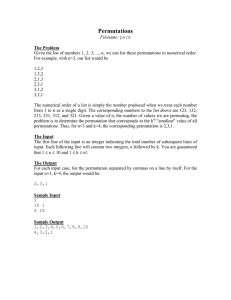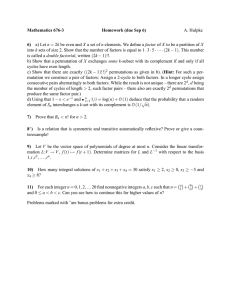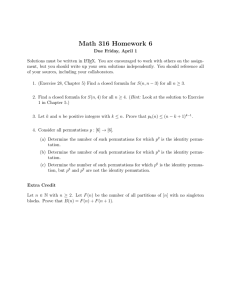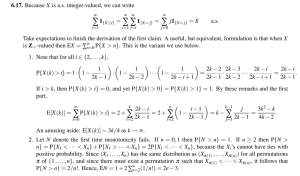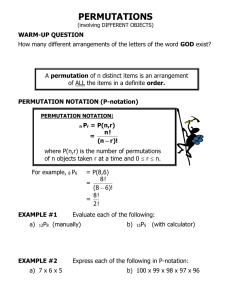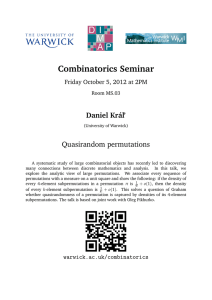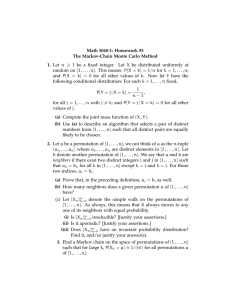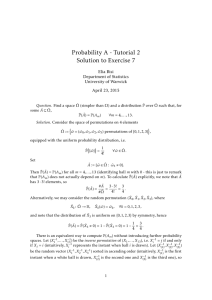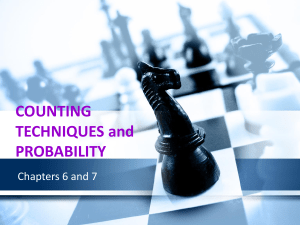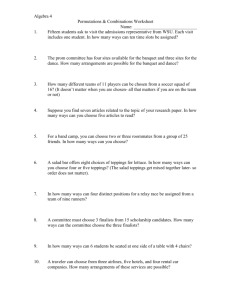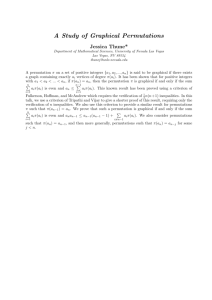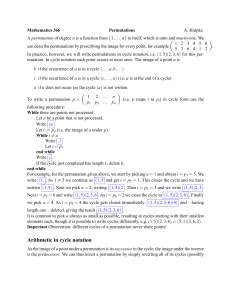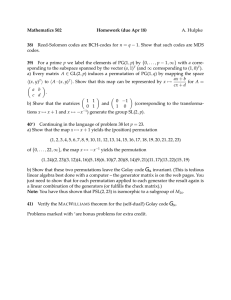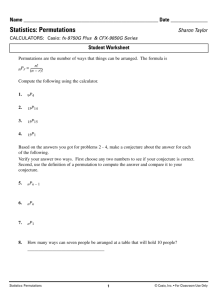Probability
advertisement
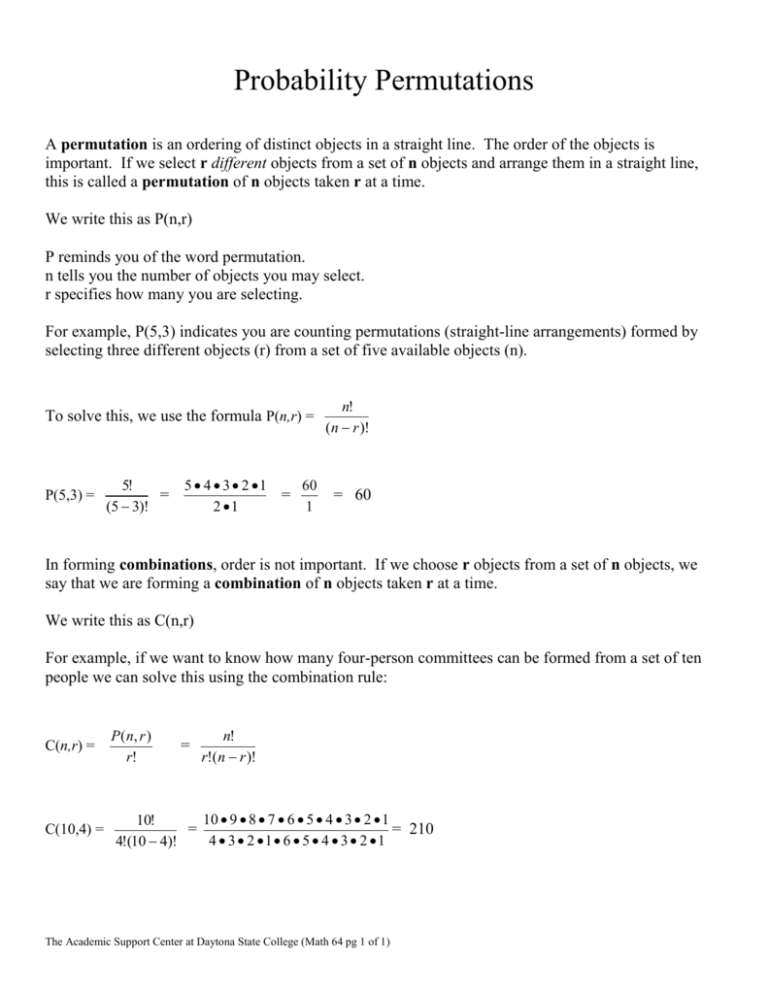
Probability Permutations A permutation is an ordering of distinct objects in a straight line. The order of the objects is important. If we select r different objects from a set of n objects and arrange them in a straight line, this is called a permutation of n objects taken r at a time. We write this as P(n,r) P reminds you of the word permutation. n tells you the number of objects you may select. r specifies how many you are selecting. For example, P(5,3) indicates you are counting permutations (straight-line arrangements) formed by selecting three different objects (r) from a set of five available objects (n). To solve this, we use the formula P(n,r) = n! (n r )! 5 4 3 2 1 60 = 2 1 1 = 60 P(5,3) = 5! = (5 3)! In forming combinations, order is not important. If we choose r objects from a set of n objects, we say that we are forming a combination of n objects taken r at a time. We write this as C(n,r) For example, if we want to know how many four-person committees can be formed from a set of ten people we can solve this using the combination rule: C(n,r) = C(10,4) = P ( n, r ) r! = n! r!(n r )! 10 9 8 7 6 5 4 3 2 1 10! = = 210 4 3 2 1 6 5 4 3 2 1 4!(10 4)! The Academic Support Center at Daytona State College (Math 64 pg 1 of 1)
